This article is more than
1 year oldTourist bitten, child attacked by dingoes
Rangers have released video of a tourist getting nipped by a dingo weeks before a 10-year-old boy was attacked at a popular camping spot.
Tourists are being warned to be wary of dingoes when visiting a popular camping spot after disturbing footage emerged of a tourist being nipped by the wild animal while sunbathing.
The shocking footage was filmed a few weeks before a 10-year-old boy was attacked and dragged underwater by a dingo at K’gari Island – formerly known as Fraser Island.
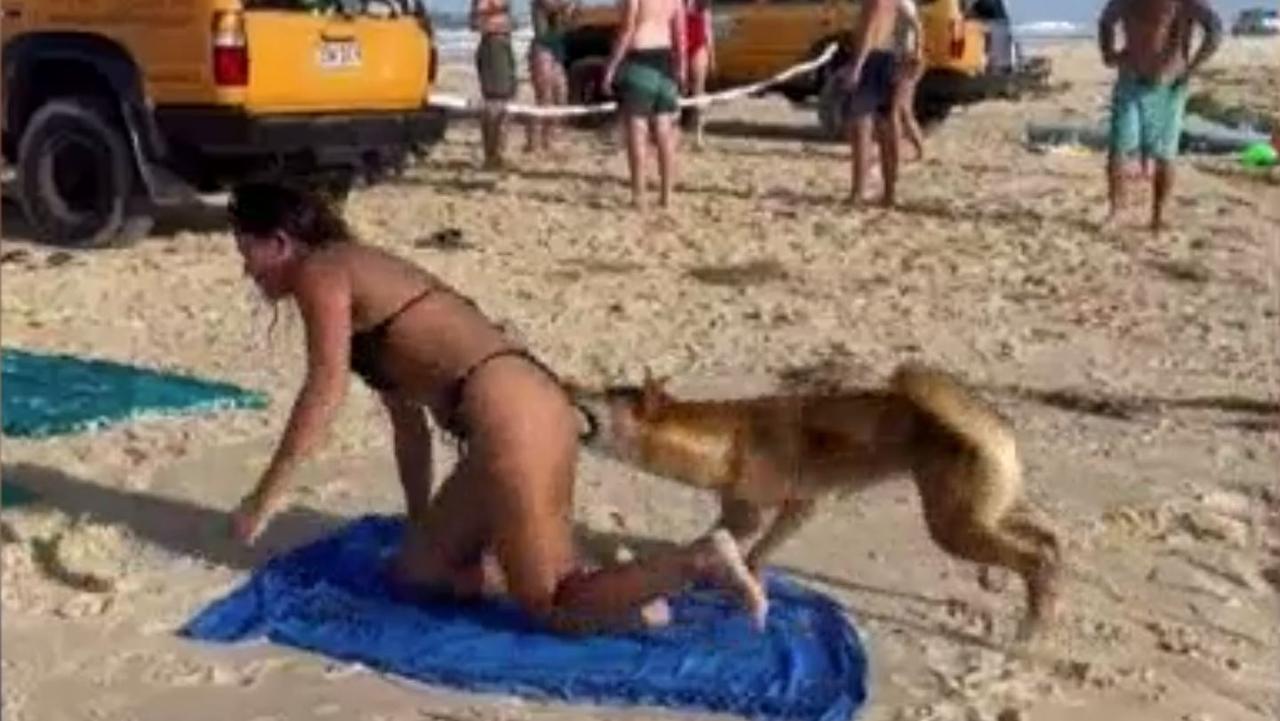
The boy suffered puncture wounds to his shoulder and bruises to his collarbone in the attack, which happened on the west coast of K’gari Island in front of a camping area on June 16.
Assistant principal ranger Danielle Mansfield said rangers were closely monitoring the responsible wongari (dingo), photographed with blood splatters across its face and paws on the day of the attack, although there were no plans to euthanise it.
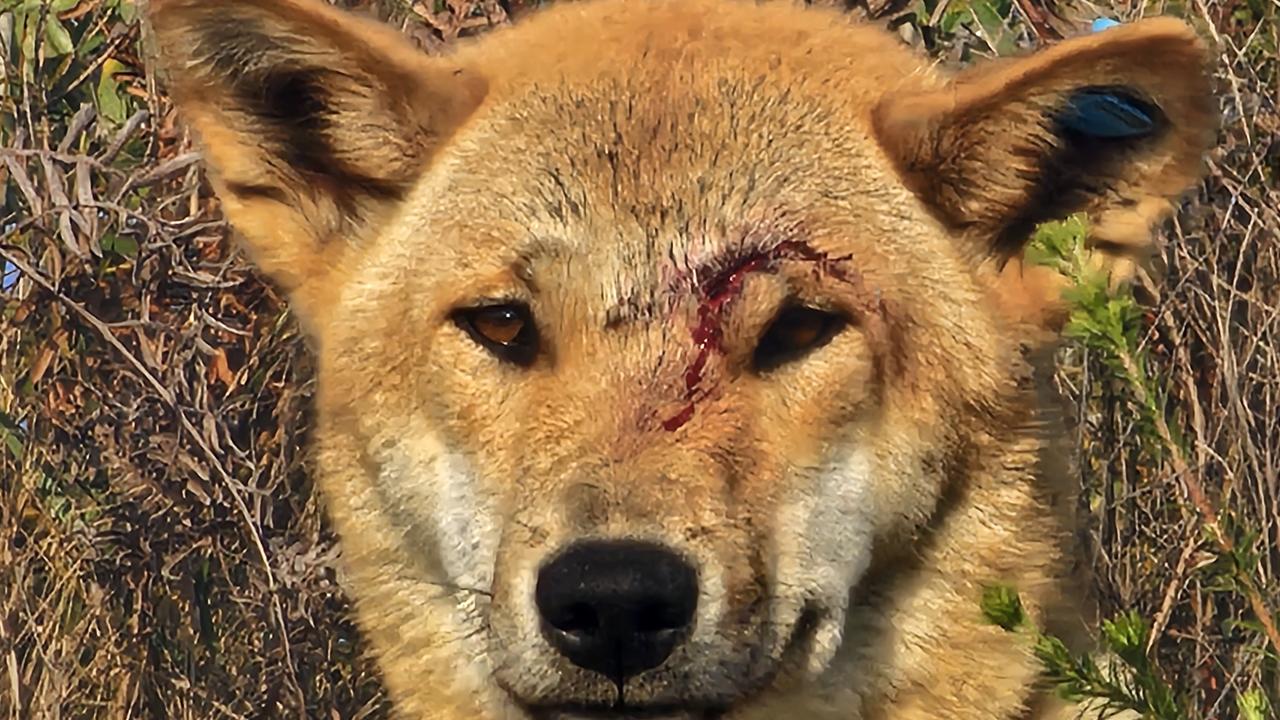
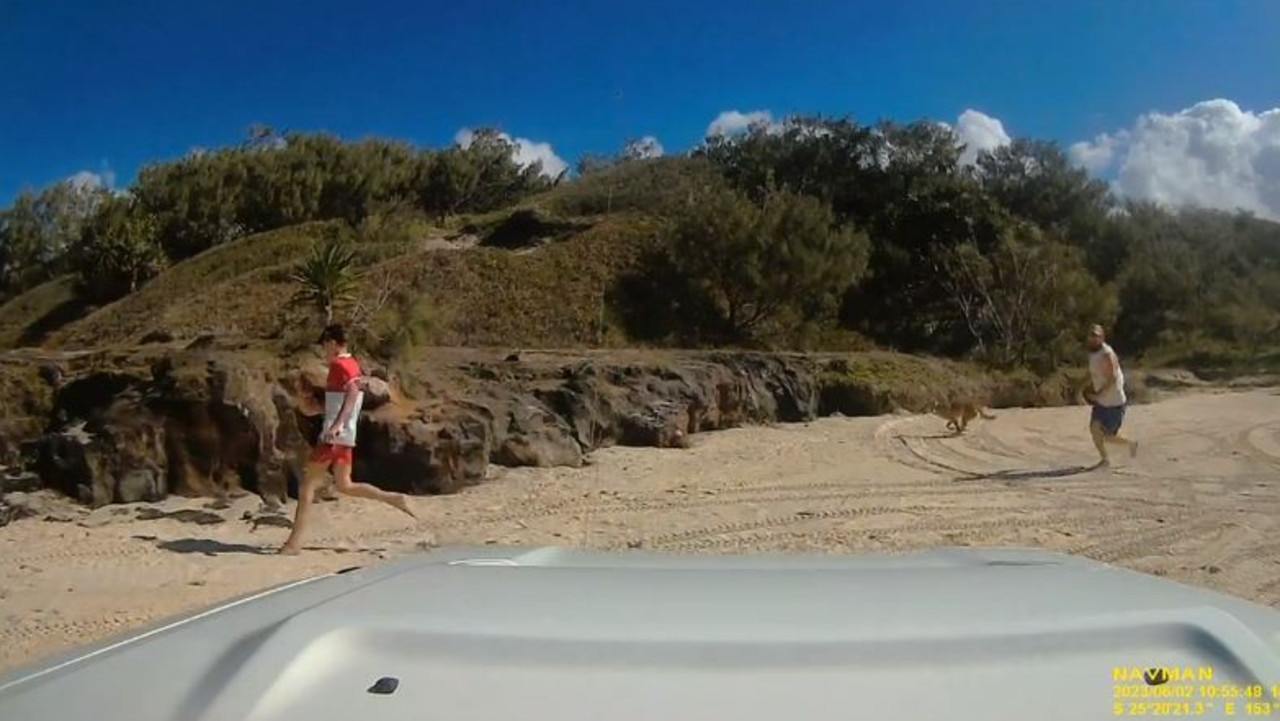
“The boy’s 12-year-old-sister who was nearby reacted quickly and ran to assist him,” she said.
“The family treated the boy for puncture wounds to his shoulder and arms and scratches and bruises on his collarbone and arm.”
Dashcam footage taken by rangers two weeks prior to the attack shows a dingo pursuing a young boy and an adult male close to where the 10-year-old was dragged into the water.
The dingo was subsequently euthanised for “poor behaviour”, although there are no current plans to euthanise the one responsible for the June 16 recent attack.
It comes a few weeks after another dingo was euthanased following a string of attacks, including on a French tourist sunbaking on the eastern side of the World Heritage listed island.
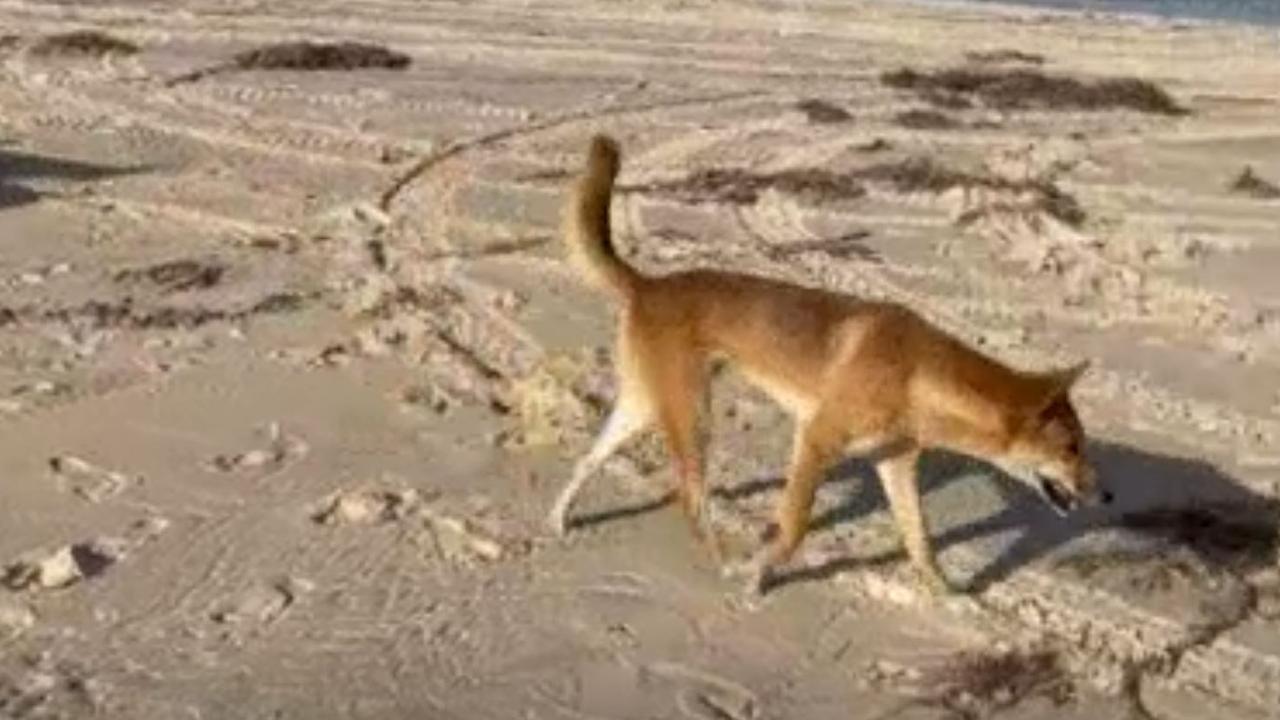
Queensland’s Department of Environment and Science (DES) told the ABC that attack, which was caught on camera, occurred in April or May.
The decision to humanely euthanase the animal earlier this month was made after it had attacked multiple other tourists, including a seven-year-old boy and a 42-year-old woman.
Rangers said there have been multiple instances on the island where visitors required assistance after they were stalked or snarled at by the wild animals.
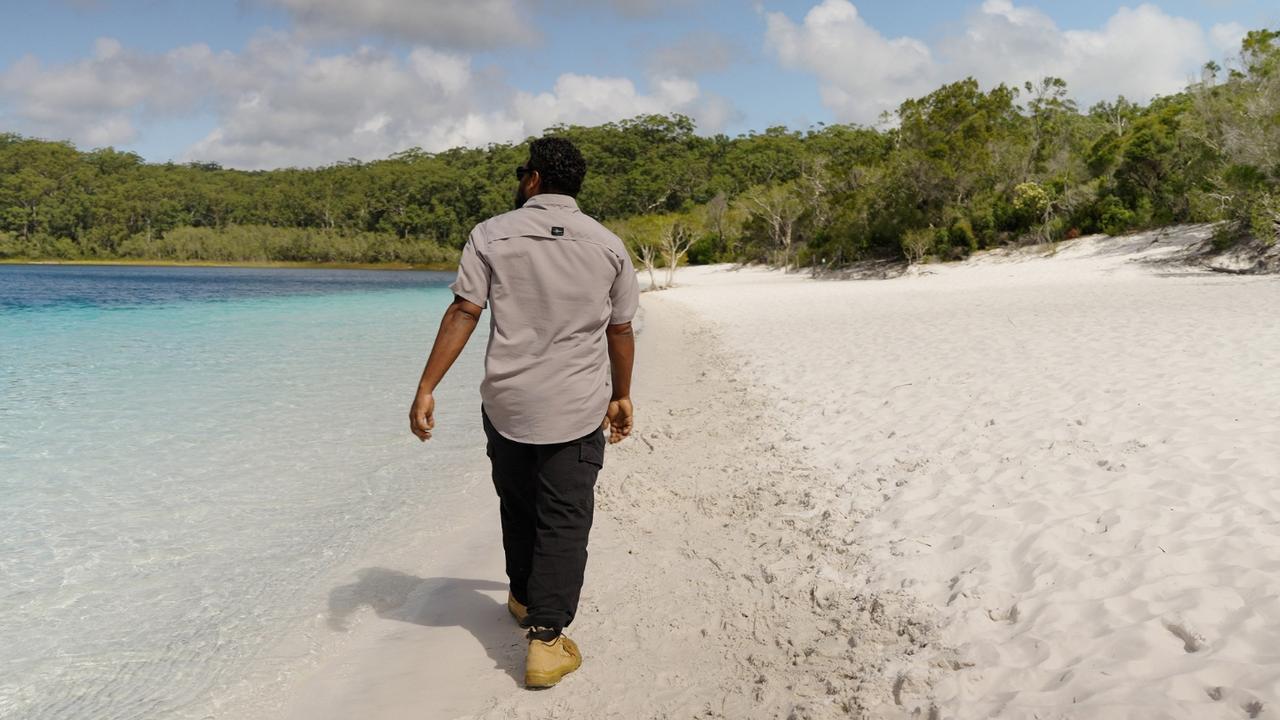
Ms Mansfield said tourists were failing to appropriately supervise their children, which on the island meant keeping them within arm’s reach of an adult at all times.
Queensland Parks and Wildlife Service offered medical assistance to the boy, who sustained no serious injuries, but his family declined.

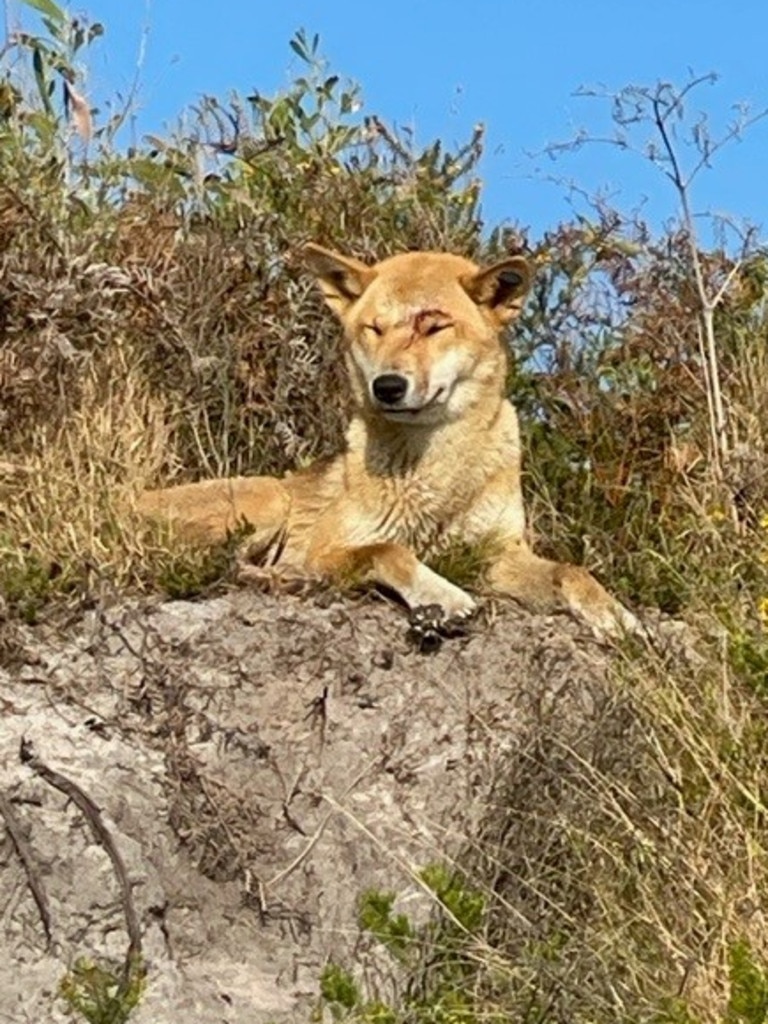
The animal was later seen “loitering” near the camping ground, digging up food scraps that had been buried in the sand.
This particular dingo was “one of a number” that failed to show any wariness of people, a result of people deliberately or inadvertently feeding the wongari, rangers say.
“Rangers chased the animal away from the camping area and we have increased patrols in the region to monitor the wongari’s behaviour and pass on dingo-safe messaging to campers and visitors,” Ms Mansfield said.
“These animals are capable of inflicting serious harm, and they have bitten children and adults, and some are quite brazen and are not fleeing when yelled at or when someone brandishes a stick.”

“People think it won’t happen to them, but it can happen to anyone and that’s why rangers are providing dingo-safe information to as many people as possible,” she said.
“We don’t want any incidents on K’gari, and people must understand that dingoes are wild animals and should never be fed or interacted with.”
Rangers say visitors who discard food or deliberately feed the dingoes have directly caused “the current and historic problems” between the animals and people on the island.
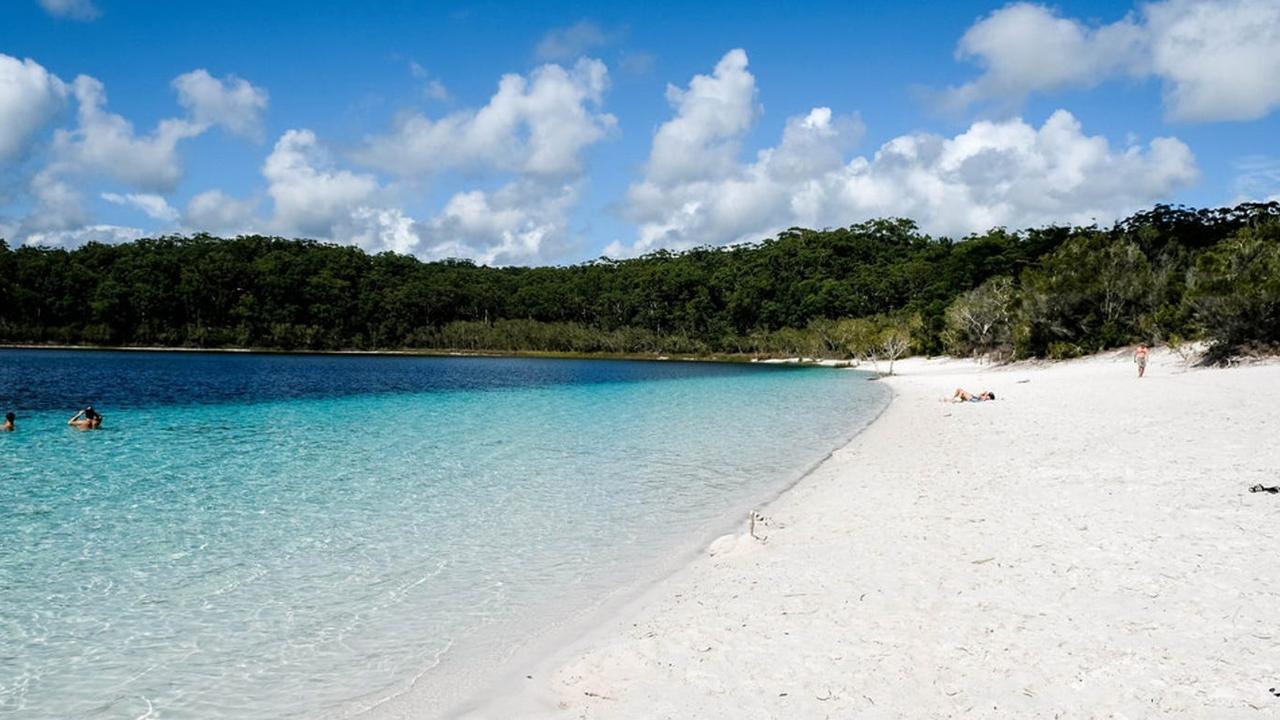
“This has to stop now, and people have to make (visitors’) personal safety and the safety of their friends and families a priority,” Ms Mansfield said.
The dingo or wongari is considered native wildlife under the Nature Conservation Act 1992 and is protected in national parks.
K’gari is a World Heritage-listed island along Queensland’s southeastern coast and is part of the Great Sandy National Park, known for its long beaches, forests and pristine freshwater lakes.
Keywords
Newer articles
<p>A bill that will ban TikTok in the United States unless its Chinese owner divests from the company has passed overwhelmingly.</p>
Congress gets closer to forcing TikTok to be sold or face US ban: What's ne
Israel Iran attack: Damage seen at air base in Isfahan
Ukraine ‘will have a chance at victory’ with new US aid, Zelenskyy says
Ukraine war: Kyiv uses longer-range US missiles for first time
Who will be Trump’s VP? A shortlist
House passes potential TikTok ban that could speed through Senate
Congress passes bill that could ban TikTok after years of false starts
How soon could US ban TikTok after Congress approved bill?
Finally, America’s Congress does right by Ukraine




